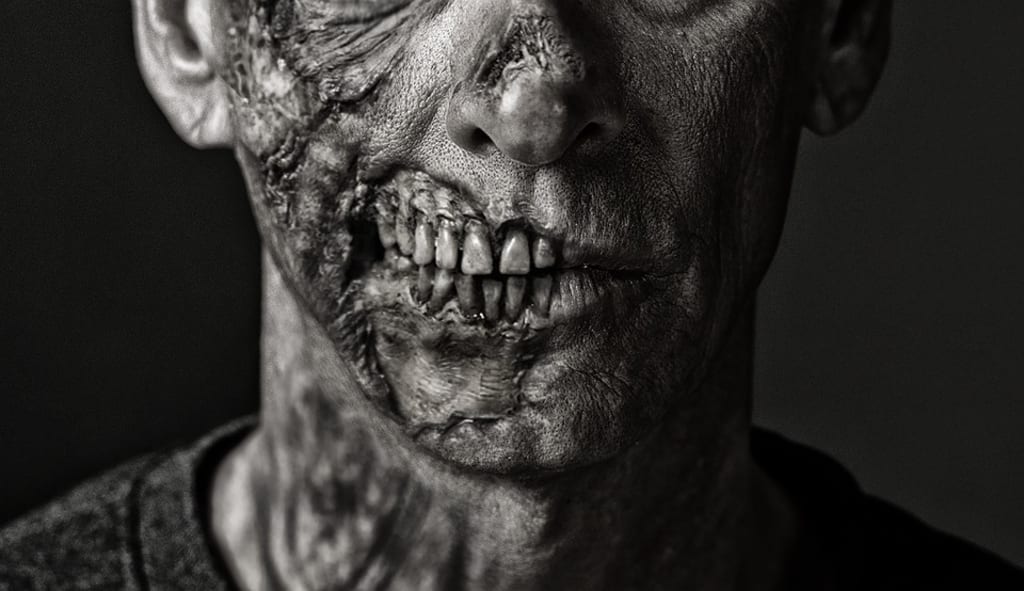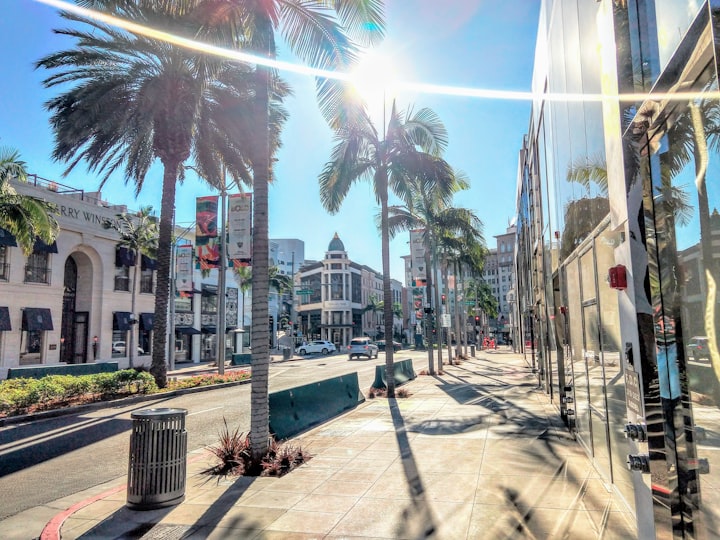Glorifying the Dead: Our Fascination with Zombies
Zombies have become a part of our daily lives and were welcomed with open arms and the occasional moan. The question is why?

Everywhere you look there are zombies. On TV, the silver screen, t-shirts, video games and even in our music as people gleefully sing and recreate the dance in Michael Jackson’s Thriller. There are cereal bowls, garden gnomes, bedding, house slippers, lunchboxes… almost any item you can imagine has been zombified. Zombies have become a part of our daily lives and were welcomed with open arms and the occasional moan. The question is why? What would be so appealing about a walking corpse? Is it possible that we as a culture tend to step within the grasps of zombies when in times of societal stress to deal with our biases, anger with our government and alienation, either self or otherwise imposed?
Zombie Fascination is not a newly originated idea. Review of movie production can be seen to show ebbs and tides in popularity. Starting in the 30s with the emergence of White Zombie (Halperin) in 1932. The successful film brought an onslaught of others to include Revolt of the Zombies (Halperin), The Walking Dead (Curtiz), King of the Zombies (Yarbrough), I Walked With a Zombie (Tourneur) and Revenge of the Zombies (Sekely).
Review of historical events from that time shows a country reeling from the financial collapse of 1929 resulting in the Great Depression, during which unemployment rates increased 607%+(Hubart) resulting in many displaced families. During this time frame, the development of the A-bomb was in production.
In January 1933, Hitler was appointed chancellor of the Nazi party leading to the enslavement, torture, and murder of millions of Jewish citizens. One who was enslaved was a Jewish scientist who Hitler ordered to develop his own nuclear arsenal. Leading to one of the deadliest conflicts in our current history, World War II. It resulted in 418,500 American casualties (WWII by the Numbers: World-Wide Deaths). All of these events in each of their wakes left the country in a state of uncontainable stress and hopelessness, this resulted in an increase in the rate of suicides to 12 out of every 100,000 people (Shmoop).
Following a period where the zombie culture ebbed, we see a rise again in the 1960s, with the release of Night of the Living Dead (Romero) that continues sporadically throughout the 70s and 80s with the movies Dawn of the Dead (Romero) and Day of the Dead (Romero).
An overview of the 60s provides a precarious time in our history from the Vietnam War and resulting PTSD, Cuban Missile Crisis, the violence entailed during the civil rights movement/desegregation, all in concert with the assassinations of John F. Kennedy, Malcom X, Martin Luther King and Robert Kennedy. Leaving the future of our country in an uncertain place at the end of the 60s. Transition through the 70s and 80s continued with an oil crisis, the impeachment of President Nixon following the Watergate scandal and recession.
Also to be noted in the 80s there was a booming emergence of new technologies never seen prior to this point. The development and release of personal computers in 1981 and personal gaming systems in particular Nintendo in 1983.
There was also natural disasters that drew the eyes of the nation, most notably the explosion of Mount St. Helens that caused the deaths of 57 people and the El’ Nino climate changes that brought some of the most destructive weather to all parts of the globe.
We did not see a renewal of the zombie subculture until 2002 with the film 28 Days Later (Boyle), this was immediately following the 9/11 attacks and the beginning of the Iraq war. From the point of its release, we have seen an unprecedented boom in zombie fascination and other apocalyptic type films but also an increasing level of societal stresses.
Chemical warfare scares, the devastation of New Orleans following Katrina, multiple terrorist attacks throughout the world, mass shooting incidents, increased racial tensions, increased political tensions related to constitutional rights, increased civil unrest from the citizens toward the government following police shootings, and the damage of hurricanes to our states – most recently Matthew, causing 11 deaths, massive flooding, millions without power for many days and billions in financial loss.
Now that the trend of Zombie Fascination has been established the question remains, why are we so into zombies? There are many different reasons which I’ll cover.
The first is the underlying racial element that can be linked to the zombies of the 30s and 40s with direct ties to the Haitian voodoo lore. Creating the “Other” prospect, that the “Other” is not like us and thus should be feared and destroyed as emphasized by Canavan:
“Zombie films depict total, unrestrained violence against absolute “Others” whose existence is seen as anathema to our own, others who are in essence living death. In our time, when this sort of unrestrained violence is officially suspect but nonetheless unofficially a foundation for the basic operation of technological civilization.”
With the coming of the 60s, there is a change to the position of “Other” when in Night of the Living Dead, the protagonist is a black male surrounded by white cast and the “villain” the zombies who are all white.
What makes this such a twist of the “Other” is that Ben is predominately the hero throughout the tale. He places himself in harm’s way against the “Other” in protection of the “Other” whom he finds himself in league with inside this lone, distance farmhouse.
We seek to commiseration with them, cheering him on as the other white characters meet their end through various mistakes despite his attempts to help them and seeing him through to the other side with a sigh of relief. That is until the end, when he is stricken down as a victim to the “Other” when he is killed by a militia of white men who see him as the “Other.” It gives rise to how dynamic the time was that surrounded this movies production and release especially given the openly displayed violence toward those in the civil rights movement.
This same perception of “Other” can also be related to more modern eras via the fear to terrorist attacks. In the wake of 9/11, the “Other” could be said to imply refugees with potential for radical ties bent on interjecting themselves to perform acts of destruction on our soil or to our citizens. A survey of 1,500 citizens by Chapman University showed a result of 41% of people interviewed were very afraid of a perspective terrorist attack.
Another theme within in zombie genre is women throughout its history. In Night of the Living Dead, there are three female characters. All of them must be protected by their male counterparts. Barbara, the character first introduced to us, spends the film in its entirety cowering in a fear-induced stupor. Judy, who is presented as a middle ground character between Barbara and Helen, losses her life to being ever devoted to being with her man through an explosion. Helen who is more vocal and outspoken ultimately succumbs to the demanded female role of the time, mother... resulting in death at the hands of her daughter who had become a zombie. Her husband as well. Which could be considered symbolic destruction of the nuclear family.
Although this particular view of the women in zombie movies began to change with the times. In Dawn and Day of the Dead films, producing stronger and more vocal female characters with still underlying sub-tones. Even our current day zombie movies and shows, including The Walking Dead as pointed out by Berk:
“The problem is that The Walking Dead doesn’t portray women as they really are: martial arts masters. The show, instead, decides to do something much more radical; it demonstrates that even when everything else has changed sexism will continue to thrive as long as there is political inequality.”
Although the most docile of female characters, Carol, was initially pinned to be the literal ringing dinner bell for the zombie hoard unless saved by her male counterparts, she did change over time. Because of pain and frustration, she became a more lethal persona than her male counterparts.
No one likes to feel helpless and in the current political climate of late, I don’t know many who feel certain about their futures. Day of the Dead gives this satirical view of the government and our military.
Projected through ignorant bullying characters, who simply bulldoze through anything they don’t agree with or understand. I have heard the US equated to a big bully in relation to our invasion and war within countries who did not initiate aggression toward us.
We, as citizens of our country, can also say we feel bullied. Changes and decisions are made every day by the few despite the outcry of the many, who put them into power. This even more evident now with the upcoming election, while long-standing officials beat their chests in “I’ve been at this X amount of years,” while around them, our country slowly falls apart.
The study conducted at Chapman University placed fear of government corruption and control at a staggering 60.6%, an attribute that Berk discusses in his work:
“The popularity of The Walking Dead, I argue, comes from people relating to the tension and frustration in the show. They too feel excluded and lied to. That their situation is too drastic to take a stand. That even if they were to take a stand there is no clear enemy in front of them – the Merles and Governors of the world feel far from the safe prison of America. The show demonstrates that who has the best answer to economic crisis, environmental disaster, etc is not the real issue. If we want to address the root problem preventing the organization of a better society we must question how those solutions are chosen, and see that every particular issue is frustrated by unequal dynamics of power in liberal democracy.”
Ideally, the trends of all the things covered, is that despite the zombies being portrayed, the villains they aren’t really the monsters of these tales. The survivors are. Day of the Dead lends an example of such through the brutish, unthinking military men and through a lone zombie, “Bub” (Romero).
The scientist who is studying him is killed and “Bub” has a reaction of grief and in turn, kills the seargent who pulled the trigger — ultimately showing, having a pulse doesn’t make you human. Even in the remake of Night of the Living Dead the character Barbara watches as the country militia shoots at zombies hanging from a tree as they laugh.
She says “They’re us, we’re them and they’re us.”(Savini) Lending to the notion that zombies, although killers are built solely out of instinct, they have no emotions so they do not act with malicious intent or with vengeance. These are human traits, making us something to be feared and a zombie to be pitied.
Perhaps this is why we relate so well to zombies. We too see as our opposition, but also as ourselves. We are our problem and also our solution. Dr. Michael Friedman weighed in on this notion “While undead creatures such as vampires and werewolves have magical powers, friends and adventures, Zombies lead a “lifeless life.”
And perhaps herein lies our fascination. We all fear leading a monotonous existence filled with boredom, emptiness and loneliness… One of the reason the show is so successful is because the writers depict how people can struggle against living an “undead life.”
In a time with technological advances and newly emerging forms of connectivity, we are more disconnected from each other than ever before spurred on by the lack of attention to the humanity of those around us, tied to our phones shambling through life. Are we becoming zombies ourselves?
Shaun of the Dead (Wright) gives nod to such a prospect a pointed out by Austin:
“The banality of his life- and by all those around him – makes Shaun’s plight at once a site of comedy and also telling a depiction of mundanity and isolation as people act like zombies even before they are one. Shaun has no ambition and seems unable to break out of repeated patterns of behavior: his morning stumble to the shops in particular indicates his lack of awareness of the world.”
Perhaps subconsciously the thought of a zombie and civil collapse are the desired end result. To return to the equivalent of the 1920s type living that we see in The Walking Dead and other zombie media… no electricity, no internet, no cellphones, less people… requiring connection with one another to survive and succeed whether that means laying or harvesting crop, scavenging for supplies, defending whatever is designated as home, etc.
Perhaps this sort of cataclysmic end would redeem humanity. It could possibly erase the lines I’ve skimmed in this paper. Removal of the us/them amongst the living. Relieving us of our narcissism and allowing us to be better versions of ourselves.
So, it seems that Zombies are a barometer of sorts for us. That it shows the periods of increased frustration we may have at any given time, as evident by the historical timeline of Zombie culture. I have enjoyed reading into the question that spurred this paper and was fascinated that the Zombie influence allows us to explore and address the underlying societal woes such as dealing with bias, government distrust and our own feelings about ourselves or our lives.
Works Cited
- “WWII by the numbers: World-wide deaths.” The National WWII Museum. n.d. Web. 24 Oct. 2016.
- Hubbert—KingM. “Great Depression.” Wikipedia. N.p.: Wikimedia Foundation, 24 Oct. 2016. Website. 24 Oct. 2016.
- Lange, Dorothea. Migrant Mother. n.d. Photo. 24 Oct. 2016.
- White Zombie. Dir. Victor Halperin. 1932. Film.
- Revenge of the Zombies. Dir. Steve Sekely. 1943. Film.
- I Walked with a Zombie. Dir. Jacques Tourneur. 1943. Film.
- King of the Zombies. Dir. Jean Yarbrough. 1941. Film.
- The Walking Dead. Dir. Michael Curtiz. 1936. Film.
- Revolt of the Zombies. Dir. Victor Halperin. 1936. Film.
- “United States military casualties of war.” Wikipedia. N.p.: Wikimedia Foundation, 4 Sept. 2016. Website. 24 Oct. 2016.
- Night of the Living Dead. Dir. George A. Romero. 1968. Film.
- Dawn of the Dead. Dir. George A. Romero. 1978. Film.
- Day of the Dead. Dir. George A. Romero. 1985. Film.
- Shmoop. The great depression statistics. 2016. Web. 24 Oct. 2016. “America in the 1960s.” n.d. Picture. 24 Oct. 2016.
- 28 Days Later. Dir. Danny Boyle. 2002. Film.
- Friedman, Ph.D., Michael. “What does our zombie attraction say about us?” Psychology Today. Psychology Today, 1991. Web. 24 Oct. 2016.
- Canavan, Gerry. “‘We are the walking dead’: Race, Time, and Survival in Zombie Narrative.” Extrapolation 51.3 (2010): 431–453. Web.
- Shaun of the Dead. Dir. Edgar Wright. 2004. Film.
- Berk, Isaac. The Walking Dead as a Critique of American Democracy (2015): n.pag. Print. Turl, Adam. “Romero’s 40 years of death.” Books and Entertainment. SocialistWorker.org, 13 Nov. 2008. Picture. 24 Oct. 2016.
- Silva, Laura. America’s top fears 2016 - Chapman University survey of American fears. Wilkinson College of Arts, Humanities, and Social Sciences, 11 Oct. 2016. Web. 24 Oct. 2016. Night of the Living Dead. Dir. Tom Savini. 1990. Film.
- Being, Supreme. Romero’s day of the dead, or: Who wants A pet zombie? Stand By For Mind Control, 12 May 2014. Web. 24 Oct. 2016.
- Kerlow, Victor. VICTOR KERLOW ILLUSTRATION. Stop Facebook: n.p., n.d. Drawing. 24 Oct. 2016
- Michael Jackson. “Thriller - single version.” The Essential Michael Jackson. 30 Nov. 1982. Video.
About the Creator
Heather Horton
Nurse, animal lover, shelter volunteer, avid reader and all around weirdo at times. Feel free to check me out on FB http://www.facebook.com/flwildflower






Comments
There are no comments for this story
Be the first to respond and start the conversation.